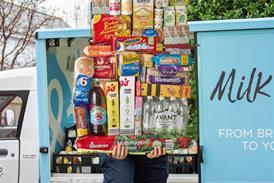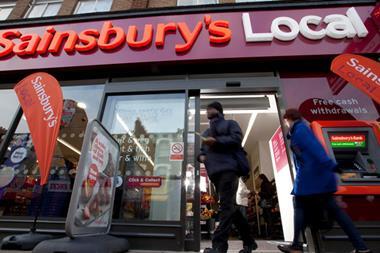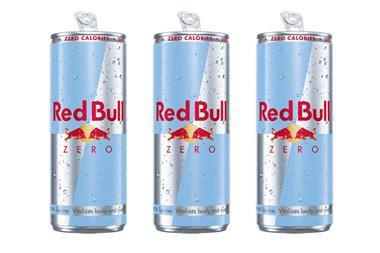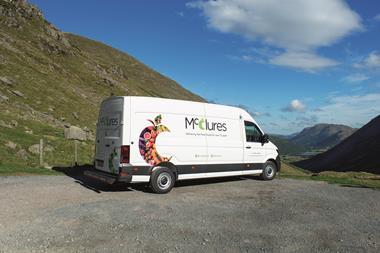Shoppers have an uncanny knack of spotting when the head office suits are in a store and have no qualms about approaching and telling them exactly what they think about this or that. That's why we know the shoppers in Camberley and Crawley are impressed by their new-look supermarkets. Time and again, in both stores, our conversations with managers, format directors and regional ops folk were interrupted by shoppers keen to have their say all of it positive.
Perhaps that's not surprising. After all, both town centre supermarkets have remained largely unchanged since they opened 30 or so years ago.
But such anecdotal evidence will please Sainsbury's marketers because Camberley and Crawley are in the JS heartlands of Surrey and Sussex and these particular supermarkets have been redeveloped using the multiple's new customer segmentation and store format work.
Essentially, this work has divided the Sainsbury customer base into three distinct groups and 10 individual segments. At one end there are the quality conscious customers identified as organics, foodies, health-conscious and the time poor, cash rich'. They account for 49% of Sainsbury shoppers and the multiple performs well with that group. At the other end, not surprisingly, are the price-oriented customers, defined as traditional, lads & lasses and economy. In between are the family-oriented customers less affluent, new and typical with whom the multiple undertrades compared with its rivals
The reason for this detailed customer segmentation? Like every retailer, Sainsbury knows that if it can really suss out what different customers want from a particular store it can adapt ranges, pricing, promotions and service levels to meet their particular needs as fully as possible.
The theory is not rocket science, but the project has been undertaken on a scale and level of sophistication few retailers have attempted (although the Co-operative Group springs to mind as another recent example). And it has all been made possible by the fact Sainsbury has a loyalty card scheme from which it is generating real customer insights something that will be further enhanced by its new data warehouse.
Assistant managing director Sara Weller explains: "It's clear that if you take a store in Cromwell Road, London, and one of the same size in Barnstaple, the needs of their customers are completely different. We can look at who is using a particular store, see what they want and get our ranges properly aligned. But it's not only about those who shop with us. We also profile people who don't shop with us so that we get an understanding of those in the area whom we may be able to appeal to if we change the offer."
Clearly that doesn't mean developing a different offer for every Sainsbury store. Instead the multiple has divided its portfolio into three clusters Main, Main Plus and Mixed Mission which are further divided into seven sub-formats all based on the types of customer they serve.
And it's when the customer segmentation data and format work come together that the fun begins as shoppers in Camberley and Crawley discovered last week.
The two stores are part of Sainsbury's Mixed Mission cluster of 120 outlets, which fall into either the meals or grab and go sub-format.
"We have a lot of 15,000sq ft and 20,000sq ft stores which were decent supermarkets but which have been left behind. We have taken the opportunity to start again in terms of the offer to the customer," says Weller. Such stores are not used by mums for a big weekly shop, but mainly by office workers seeking lunch, or shoppers looking for meal solutions on the way home. "These town centres have shoppers mainly in a high quality segment who are mostly cash rich, time poor. There is also a strong traditional shopper base which is catered for by the core grocery offer. The challenge is getting a balance so the latter can still get what they need while making more opportunities for fresh and convenience," says Weller.
Before the stores were rebuilt, 25% of their space was given to fresh foods which generated about 50% of their turnover. Now about half the space has been given over to fresh, with core grocery accounting for three fifths of the rest. The remainder is taken up by what Weller calls "non traditional non foods" items that can be bought either as gifts (such as cards and CDs) or by people looking to pamper themselves (upmarket beauty products, for instance).
The result in both stores is stunning. In the place of old fashioned layouts are stores that offer excitement and theatre. Fresh, convenience and food to go products at the front combine well with a solid grocery proposition at the rear, while different ceiling heights accentuate the fact that they are separate zones. The food to go counters are impressive. Other neat features include soft spot lighting and subtle signage to identify new areas such as the Treat and Entertain fixtures. Promotions are kept to a minimum. Given the local demographics, Camberley is a little more upmarket than Crawley in terms of premium ranging and some features, notably a standalone hot food to go area.
Weller says that in the next nine months Sainsbury will develop different trials for Mixed Mission concept stores in a variety of locations although as many as 60 could take the format being tested in Camberley and Crawley.
The multiple will also work on its Main Plus cluster. There are 59 of these larger stores, divided into average and broad appeal sub-formats. Weller says the challenge will be to develop the right sort of extended ranges to appeal to family shoppers. And this focus on family shoppers will be just as important for stores that fall into Sainsbury's Main cluster, which accounts for 273 stores in the high affluence, average and broad appeal sub-formats.
Weller says two thirds of Main stores are in good shape because they are high affluence or average sub-formats which are at the heart of the multiple's store reinvigoration programme (120 will be revamped this year alone). The challenge will be to change the offer in broad appeal stores so they are more attractive to family shoppers in areas of relatively low affluence.
"The family segment already accounts for 25% of our business," says Weller, "so there are large chunks of customers who are absolutely within our grasp. There's no evidence to suggest there is a brand issue with these customers. But there is an offer issue."
And Weller insists that if Sainsbury can improve its offer, it will pull in these punters. At the same time, she says the multiple has no intention of losing its grip on core customers. "There is a growth opportunity in our quality segment and lots of stuff in the Mixed Mission stores will deliver that. These customers are the heartland of our business. We are market leaders with those customers and are doing a good job of acquiring them because we have got the formats to attract them."
In its interims last week, the multiple said a combination of slicker marketing, reinvigorated stores and better ranging had led to a 6.2% rise in customer visits and an 8.7% jump in the number of households shopping in its outlets. And there is more to go at, Weller says. The right offer in the right store for the right customers is a £500m sales opportunity for Sainsbury. "Having done the work it's now about execution. We must prove we can lay down stores and make them work, but the foundations are very robust."
And customers in Camberley and Crawley last week seemed to think Sainsbury had made a good start. n
{{FEATURES }}
Close menu
- Home
- Retail & Wholesale
-
Products & Suppliers
- Back to parent navigation item
- Products & Suppliers
-
Product Categories:
- Back to parent navigation item
- Product Categories:
- Alcoholic drinks
- Bakery
- Cereals & breakfast
- Cheese
- Chicken & poultry
- Chocolate
- Confectionery
- Crisps, nuts & snacks
- Dairy
- Fish
- Fresh produce
- Frozen
- Household
- Meat
- Own Label
- Sauces & condiments
- Seasonal
- Soft drinks
- Vaping
- Vegan & plant-based
- World foods
- Suppliers
- People
- Reports & Data
-
Topics A-Z
- Back to parent navigation item
- Topics A-Z
-
Popular topics:
- Back to parent navigation item
- Popular topics:
- Cost of living crisis
- Crime
- Deposit Return Schemes
- Finance
- Government & Regulation
- Health
- Inflation
- Loyalty
- Marketing
- Mergers & Acquisitions
- New Product Development
- Sourcing
- Supply chain
- Sustainability & environment
- Technology
- Ultra Processed Foods
- Vaping
- A-Z all topics
- Content by type:
- Events
- Subscribe now
Sign in to comment on this article
Not logged in before? Register for FREE guest access today.
You will be able to:
- Read more stories
- Receive daily newsletters
- Comment on stories
Advert



















No comments yet